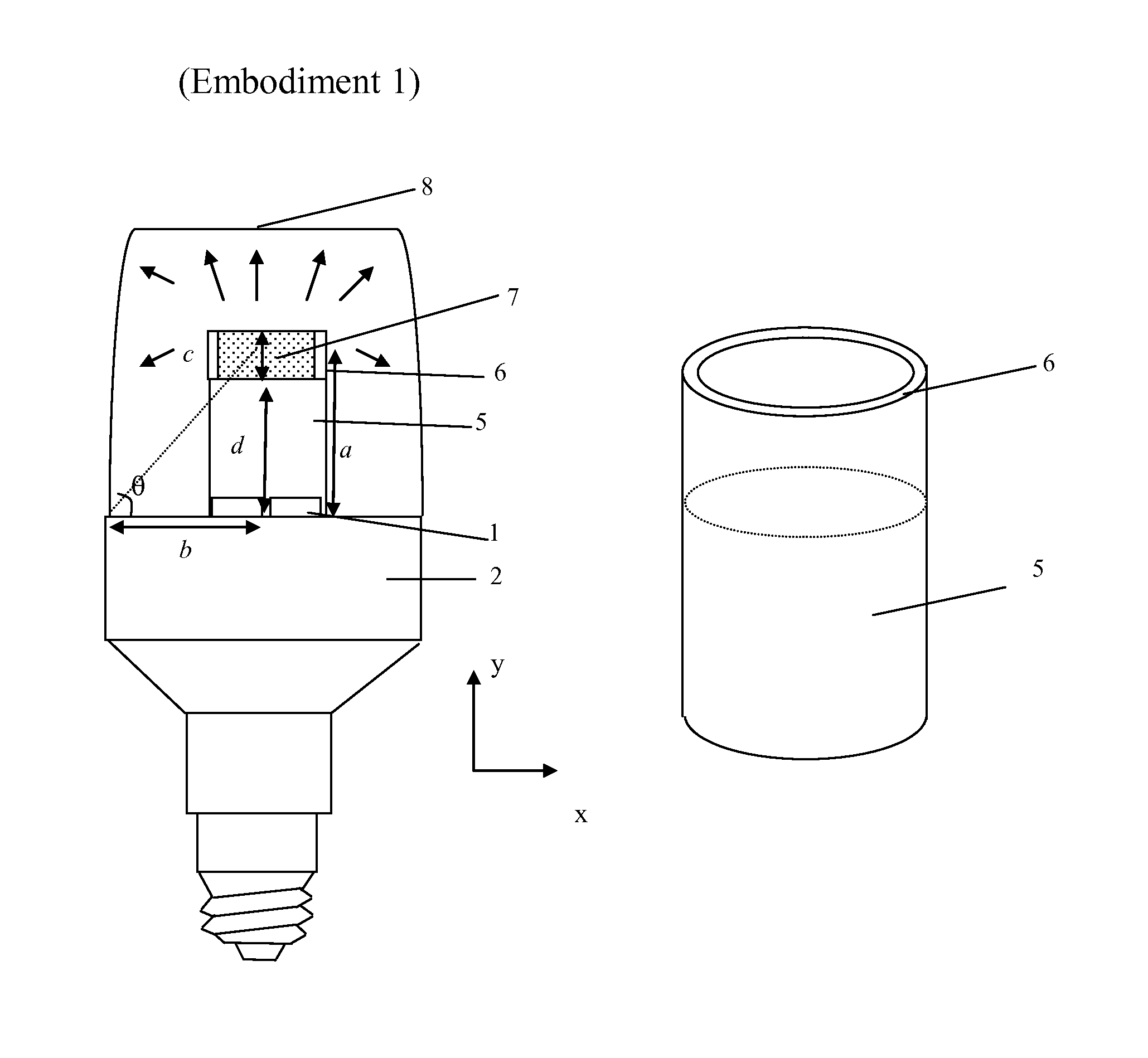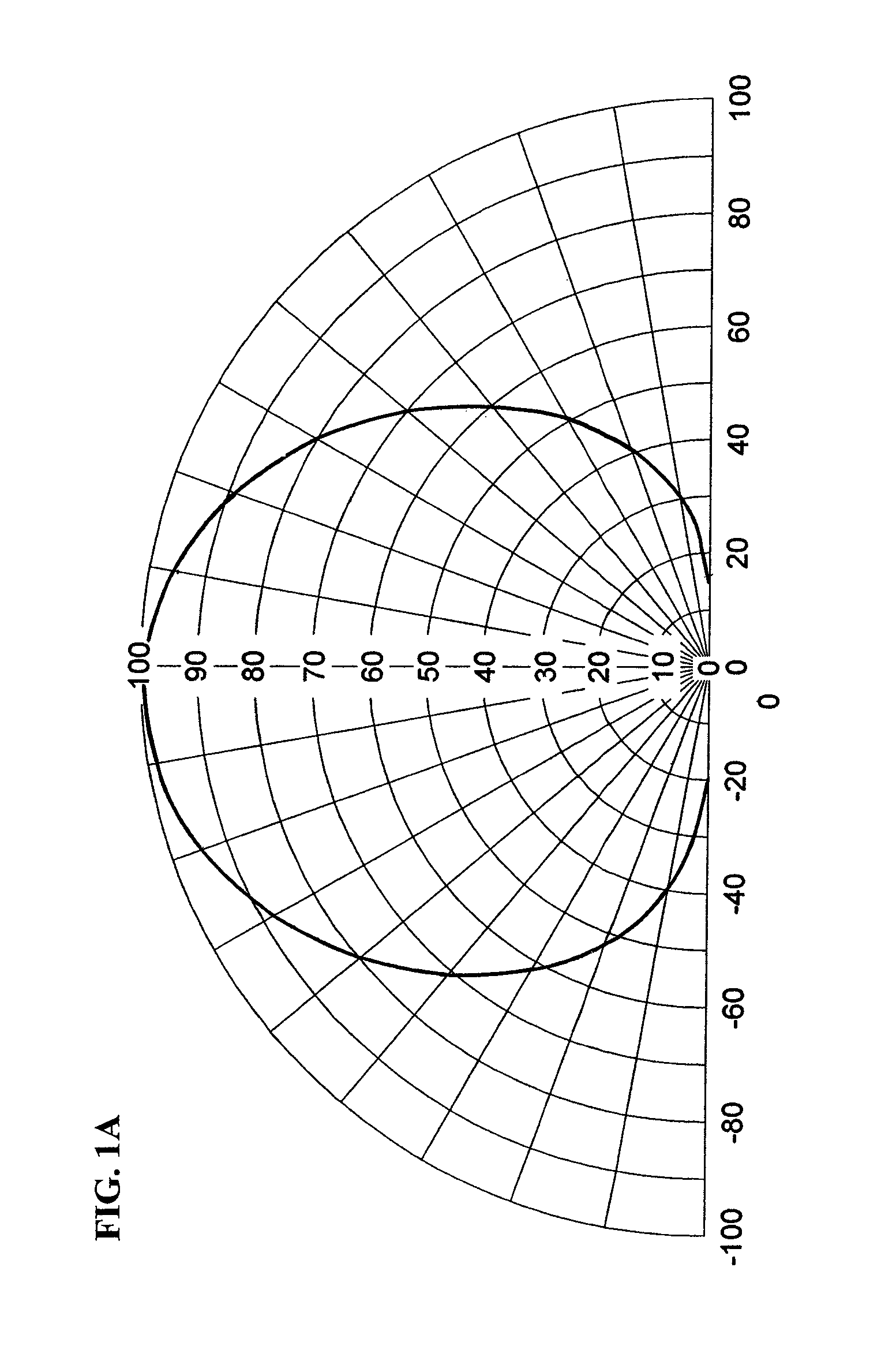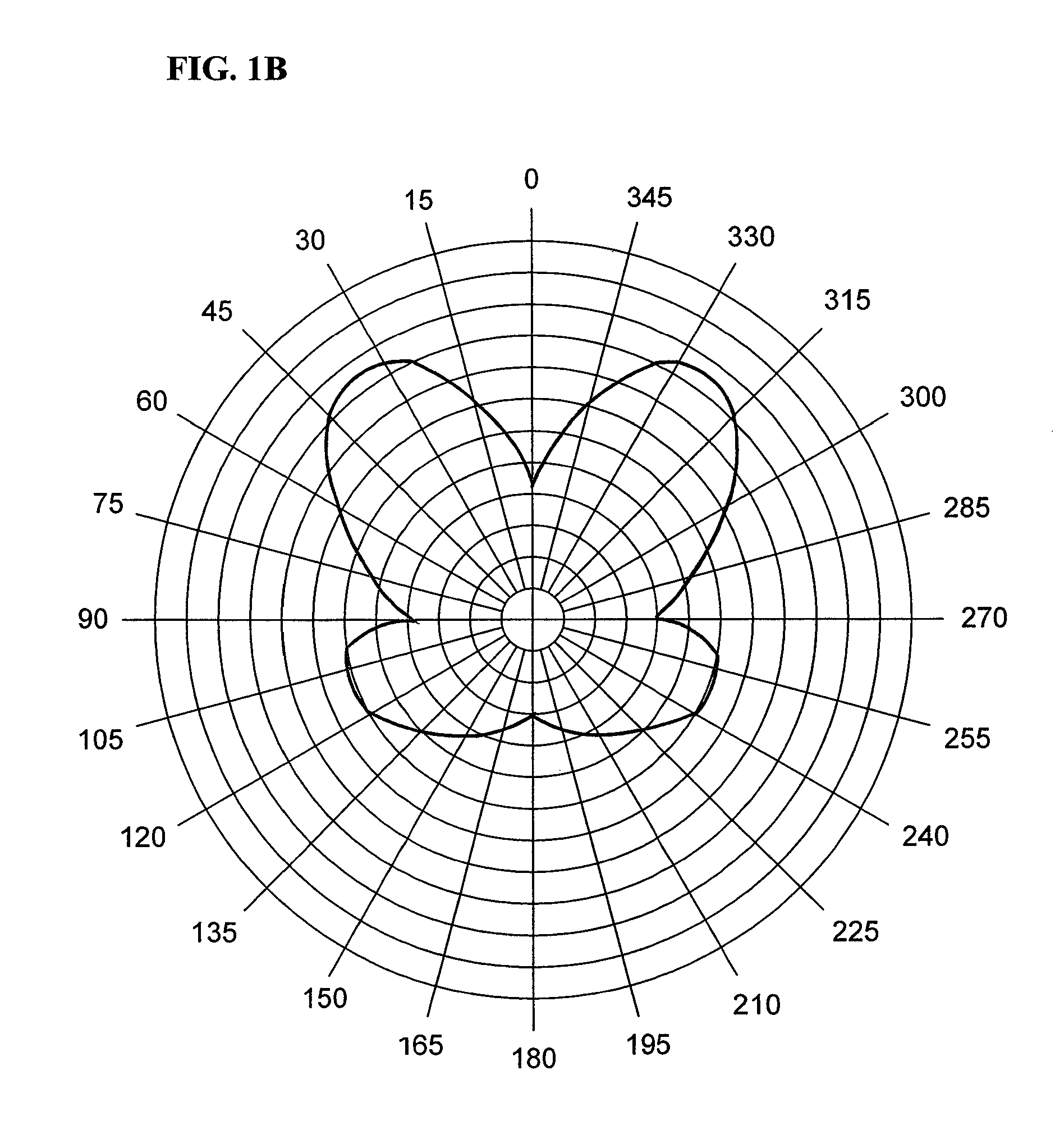Light emitting diode device
a technology of light-emitting diodes and led lamps, which is applied in the direction of fibre light guides, lighting and heating apparatus, light source combinations, etc., can solve the problems of uneven light distribution and shadowing effect, unsatisfactory vertical light-emitting applications, and uneven light distribution to the bottom or side, etc., to achieve good heat-sinking properties, low loss, and wide beam angle
- Summary
- Abstract
- Description
- Claims
- Application Information
AI Technical Summary
Benefits of technology
Problems solved by technology
Method used
Image
Examples
embodiment 1
[0063]A first particular embodiment of an LED device in accordance with the present invention is illustrated in FIG. 9A. The LED device includes one or more LEDs 1, a metal heat-sink chassis 2, a waveguide 5 with a pocket region 6 created at the top of the waveguide 5, and a light extraction and redistribution region 7. The waveguide unit 5 acts to elevate the point of light source from the LED 1 to the light extraction and redistribution region 7, to overcome light emitted downwards from being shielded by the metal heat-sink chassis 2. The waveguide 5 can be made from any known light guide materials with minimal optical absorption, and in this example, clear polished acrylic is used. In the exemplary embodiments described herein, the LED device is an LED bulb including a conventional screw-type mount 25 for mounting the bulb in a conventional screw-type socket of the type included in consumer lamps, etc. It will be appreciated, however, that the LED device may also be any of a vari...
embodiment 2
[0067]According to this embodiment, the general structure in FIG. 8 can be modified to the structure shown in FIG. 10A. For this structure, the acrylic waveguide 5 is similarly used to elevate the point of light source. However, in this embodiment the light extraction and redistribution region is made up of holes 10 formed in the top region of the waveguide 5 (an example is shown in inset of FIG. 10A). The holes 10 will reflect and refract the light in all directions. Indeed the difference in refractive index between the waveguide material and air is large enough to create optical reflection when light hits the interface between the waveguide 5 and air. The manner that the holes 10 are positioned in the waveguide 5 can be tailored to realise different types of angular light distribution patterns as will be appreciated by those having ordinary skill in the art. This method is beneficial because the entire waveguide 5 and light redistribution region made up by the holes 10 is easy to ...
embodiment 3
[0069]According to Embodiment 3 of the invention, the structure in FIG. 8 can be modified as shown in FIG. 11. For this structure, the acrylic waveguide 5 is similarly used to elevate the point of light source to the light redistribution region. In this case, the light distribution region is made of a partially transmitting mirror 11. The partially transmitting mirror 11 is formed at the top of the waveguide 5 such that it will transmit a certain percentage of the light and reflect / refract a certain percentage that is directed to it. In this case, the partially transmitting mirror 11 will reflect and refract some light downwards and sideways, but also allow some light to be distributed upwards.
[0070]The partially transmitting mirror 11 can be made of a thin metal layer, or more preferably be made of materials with different refractive indices to reduce loss / absorption, deposited on the top surface of the waveguide 5. As shown in FIG. 11, the partially transmitting mirror 11 may incl...
PUM
 Login to View More
Login to View More Abstract
Description
Claims
Application Information
 Login to View More
Login to View More - R&D
- Intellectual Property
- Life Sciences
- Materials
- Tech Scout
- Unparalleled Data Quality
- Higher Quality Content
- 60% Fewer Hallucinations
Browse by: Latest US Patents, China's latest patents, Technical Efficacy Thesaurus, Application Domain, Technology Topic, Popular Technical Reports.
© 2025 PatSnap. All rights reserved.Legal|Privacy policy|Modern Slavery Act Transparency Statement|Sitemap|About US| Contact US: help@patsnap.com



